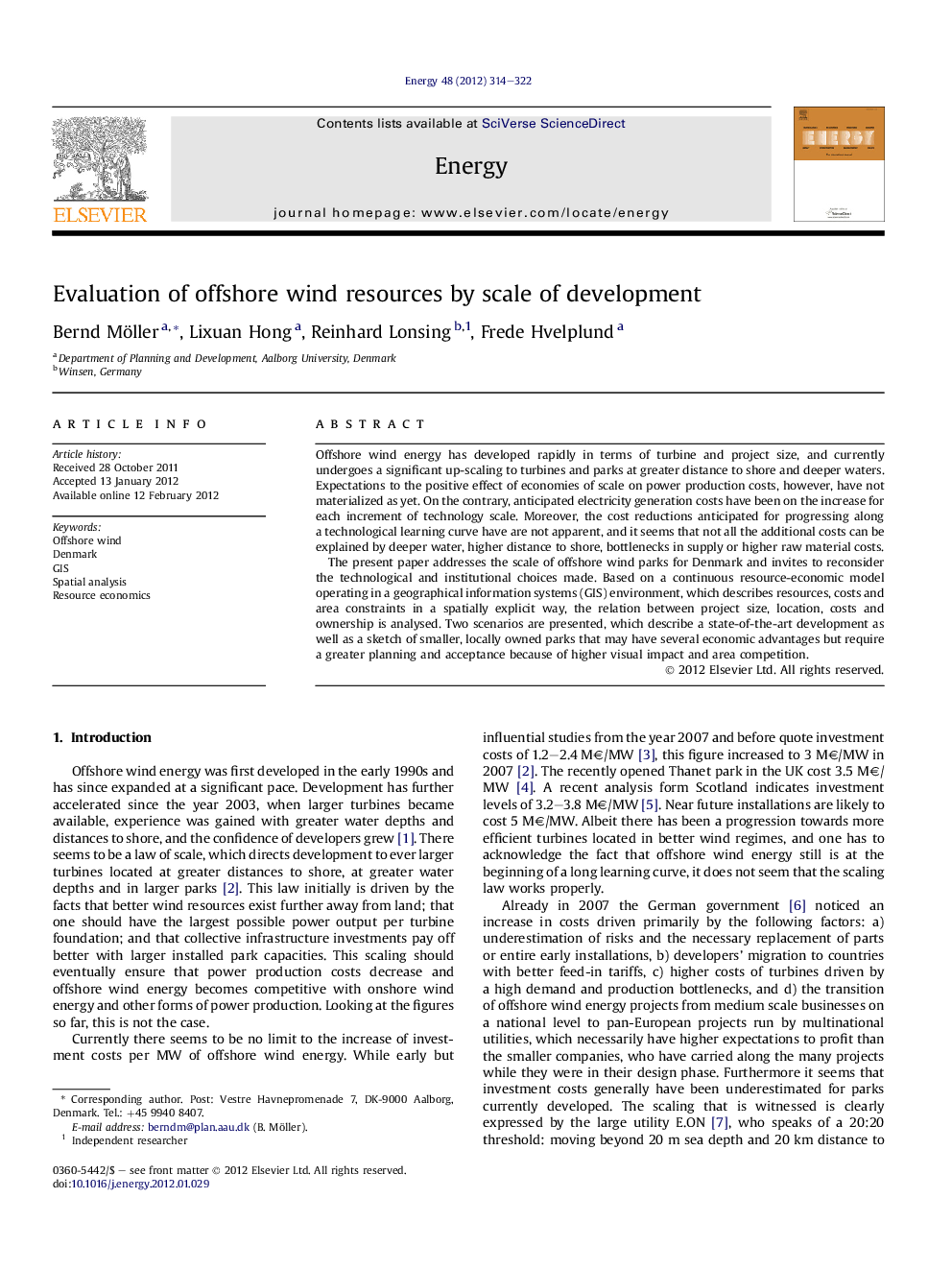| Article ID | Journal | Published Year | Pages | File Type |
|---|---|---|---|---|
| 1733354 | Energy | 2012 | 9 Pages |
Offshore wind energy has developed rapidly in terms of turbine and project size, and currently undergoes a significant up-scaling to turbines and parks at greater distance to shore and deeper waters. Expectations to the positive effect of economies of scale on power production costs, however, have not materialized as yet. On the contrary, anticipated electricity generation costs have been on the increase for each increment of technology scale. Moreover, the cost reductions anticipated for progressing along a technological learning curve have are not apparent, and it seems that not all the additional costs can be explained by deeper water, higher distance to shore, bottlenecks in supply or higher raw material costs.The present paper addresses the scale of offshore wind parks for Denmark and invites to reconsider the technological and institutional choices made. Based on a continuous resource-economic model operating in a geographical information systems (GIS) environment, which describes resources, costs and area constraints in a spatially explicit way, the relation between project size, location, costs and ownership is analysed. Two scenarios are presented, which describe a state-of-the-art development as well as a sketch of smaller, locally owned parks that may have several economic advantages but require a greater planning and acceptance because of higher visual impact and area competition.
► A spatially explicit model of offshore wind energy resource economy. ► Potentials, costs and constraints mapped for the Danish offshore area. ► Re-scaling to near-shore wind energy may be advantageous if planning challenges are met.
